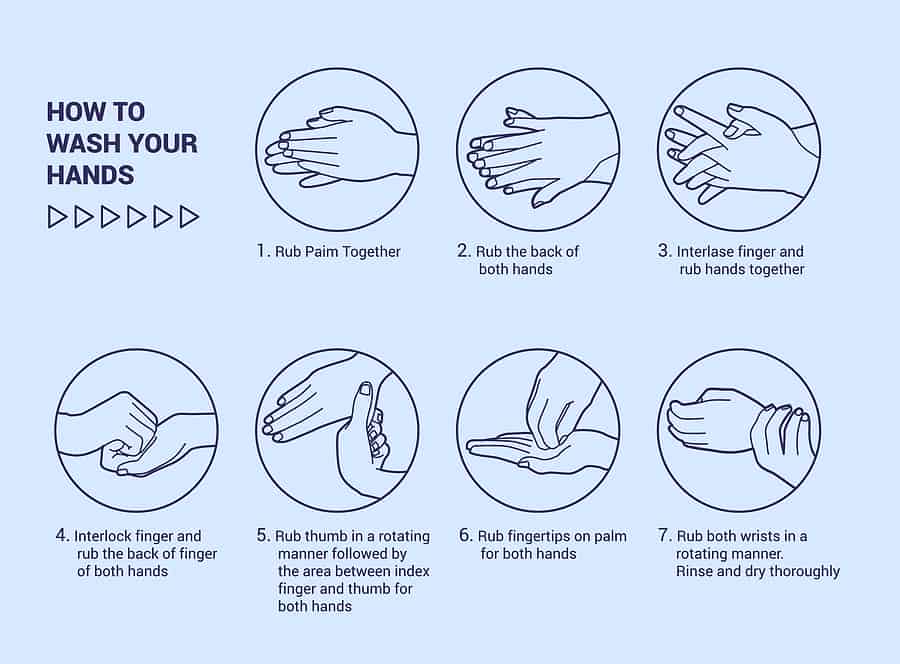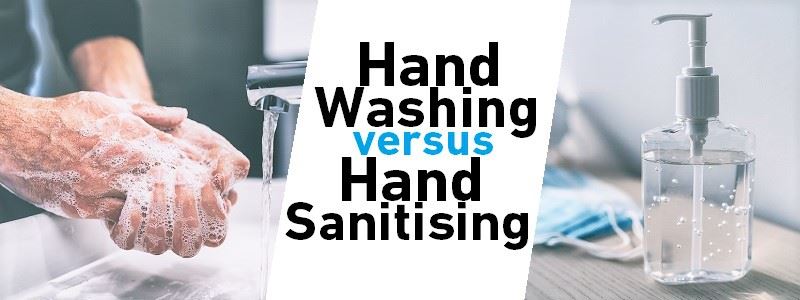Hand hygiene has been a huge part of the global response to COVID-19.
While there are no figures for the direct contribution of hand hygiene to the spread of the pandemic, data strongly advocates both handwashing and alcohol-based rubs (hand sanitisers) to help prevent the spread of pathogens and infections.
Soap or Sanitiser: Which is Better?
With the popularity of hand sanitisers soaring (as UK sales rocketed as high as 255% amid COVID-19), it’d be understandable for people to think that alcohol-based rubs are the best option. Why would they be so in demand if they weren’t, right?
Well, what if we told you that, while alcohol-based rubs are effective, the good ol’ soap and water method is actually the more recommended form of hand hygiene.
The Benefits of Soap and Water
Centres for Disease Control and Prevention (CDC) recommends washing hands with soap and water whenever possible, because “handwashing reduces the amounts of all types of germs and chemicals on hands”.
Using soap and water is believed to be more effective than using a hand sanitiser, since hand washing is better at removing certain bacteria (like Cryptosporidium, norovirus, and Clostridium difficile1-5).
Hand washing is also the better form of hygiene for hands that are visibly dirty or greasy. When hands are heavily soiled, perhaps from handling food, playing sports, gardening or other messy/outdoor activities, hand sanitisers may not work well enough to properly clean the hands. In these cases, washing with soap and water is optimal.
Why is Hand Sanitiser so Popular?
All these hand washing suggestions come with a regular disclaimer: if soap and water is not available, use hand sanitiser.
Ultimately, hand sanitiser is convenient, because you can use it anywhere and everywhere (the same can’t always be said for handwashing). That doesn’t go to say that you should choose sanitiser over soap and water – always make handwashing your first solution, and only default to sanitiser when you have to.
The Effectiveness of Hand Sanitiser
The CDC claim that using a hand sanitiser with at least 60% alcohol can help you avoid getting sick and spreading germs to others by minimising the number of microbes on hands, however they don’t eliminate all types of germs.
Many studies show that an alcohol concentration between 60–95% is most effective at killing germs. Non-alcohol-based sanitisers, or ones with a lower alcohol concentration, may “not work equally well for many types of germs and merely reduce the growth of germs rather than kill them outright”.
Hand sanitiser may not be particularly effective for removing harmful chemicals, like pesticides and heavy metals. In one study, people who reported using sanitiser for hand hygiene had increased levels of pesticides in their bodies. So, when dealing with such chemicals, it’s important to thoroughly wash your hands, even if you regularly use sanitiser.
Hand Hygiene: Do it Properly
Hand Sanitiser
Alcohol-based rubs can effectively inactivate many types of microbes, but only when used correctly. Apply the product to the palm of one hand (if you’re unsure of the correct amount, check the label) and rub all over the surfaces of your hands until they’re dry. A lot of people don’t use a large enough volume, or may wipe it off before it’s properly dried, consequently minimising any effectiveness.
Hand Washing

Hand Hygiene from Direct365
All sorts of UK businesses trust in us to supply cost-effective hygiene solutions.
At Direct365, we provide various Washroom Services, including professional dispenser and refill services for both hand sanitiser and soap, as well as a vast range of Washroom and Hygiene Supplies to keep your business sleek, clean and safe.

